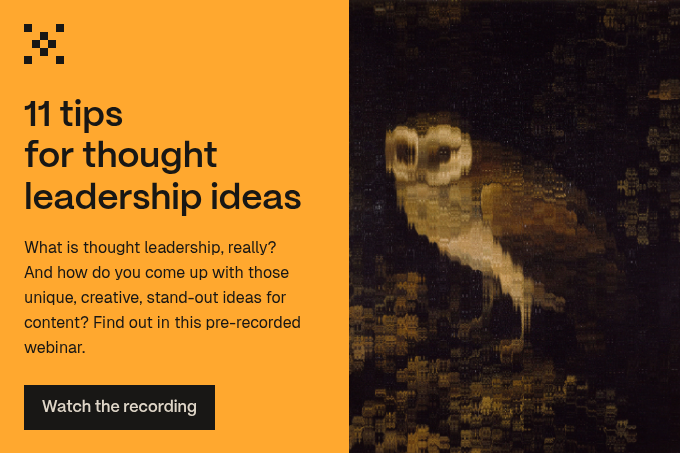Everyone can write. But not everyone can write well. We all learn to write at school but then society makes a distinction between ‘writers’ and ‘the rest of us.’ A writer sits in a garret and writes the great American novel. The rest of us write memos. It’s a false division.
Nine ways copy can go wrong (and what to about it)
Because everyone can write, people underestimate its importance and overestimate their own ability. In turn, they rarely think about hiring a specialist when they have something important to say.
I’m not talking about advertising copywriting, which is an artform at its best – business haikus. I’m talking about brochures, websites, case studies, press releases, reports, letters and the humdrum daily word torrent.
What comes out of a lot of companies is bad. In my experience there are nine ways writing can go wrong and, happily, a few easy ways to turn the terrible into readable:
1. It thinks too much of itself
Some writing suffers from chronic self-importance. It’s a case of thinking that longer, fancier words equate to greater meaning. The UK satirical magazine Private Eye regularly pokes fun at this in its “Solutions” column. Take Dow Corning’s “Innovative solutions for wound management,” which really just means “bandages.” This kind of language inflates meaning, arouses scepticism, and ultimately leaves the reader unimpressed.
Pro tip: Avoid buzzwords and phrases that obscure simple truths. Words like “synergy,” “holistic,” “innovative,” and “disruptive” are so overused that they’ve lost all impact. Instead, strive for clarity and directness. If you want to see a hall of shame for such terms, check out our list of the worst corporate buzzwords.
2. It’s too clever by half
For some reason, people are afraid to write as they speak. They want to sound smart, important, and authoritative, so they rely on unnecessarily big words and convoluted sentences. A school board meeting once yielded this gem: “The Governing Body are agreeing this budget as the financial mechanism to support the education priorities of the school as identified in the School Development Plan and will adhere to the best value principles in spending its school funding allocation.” What did that actually mean? “We approve the budget.”
Pro tip: Use short, clear sentences. Replace complex phrasing with straightforward language. If you need further convincing, have a look at our post on why short words are still best.
3. It gets hyped up
Overhyped language is a sure way to lose credibility. Business communications, especially press releases, are often guilty of this. For example, frankenquotes like, “Nortel has established a legacy in innovation and will continue to push the envelope…” are contrived and inauthentic. The worst part? No one actually talks like that.
Pro tip: Ask yourself, “Would I say this in real life?” If the answer is no, rewrite it. Stick to believable language and avoid hyperbolic adjectives like “world-class,” “cutting-edge,” and “game-changing.” For more on spotting bad writing at a glance, see our article on how to spot sucky writing from 50 paces.
4. It tells lies
Bad writing sometimes deliberately twists or exaggerates the truth. This destroys trust. Readers (including your customers) have finely-tuned bullshit detectors and will sense when something is off. In the UK, [journalists rank near politicians and spin doctors in public trust](https://www.ipsos.com/en-uk/ipsos-veracity-index-2020-trust-in-professions#:~:text=Nurses%2C doctors and engineers are the most trusted,trust care home workers and home delivery drivers.). Good journalists, however, know that the truth matters — and so should good business writers.
Pro tip: Be honest. Don’t overstate benefits or make promises you can’t keep. Use facts and figures to back up claims instead of vague statements.
5. It ignores the reader
One of the biggest sins of bad writing is to focus on what you want to say rather than what the reader wants or needs to hear. This is where corporate and technical content often falls flat. Think about legal terms like “This software is licensed under the agreement below” versus Google’s more engaging approach: “Please read this carefully, it’s not the usual yada, yada.”
Pro tip: Think about your reader first. What problem are they trying to solve? What’s the one thing they want to know? Address that clearly and concisely.
6. It’s bloated
Most writing can stand to lose a few pounds. Consider Lincoln’s Gettysburg Address — fewer than 300 words and yet one of the most powerful speeches in history. The advice from Antoine de Saint-Exupéry rings true: “Perfection is achieved not when there is nothing more to add, but when there is nothing left to take away.” And this is especially true when writing for the web, where less is more.
Pro tip: Aim to cut 20-30% from your first draft. Delete unnecessary words, redundant phrases, and anything that doesn’t add value. If you’d like specific tips, have a look at our ten ways to slim down bloated copy.
7. It has no direction
Without a clear purpose, writing meanders and loses the reader’s attention. Good writing drives forward with a sense of purpose. My favourite tutor at Oxford put it best: you have to drive your argument like Ayrton Senna (a famous racing driver). Bad writing, on the other hand, gets lost in tangents and competing ideas, making it a chore to read.
Pro tip: Stick to one main point per piece of writing. Organise your thoughts logically, and use bullet points, lists, and subheadings to guide your reader.
8. It’s full of clichés
When writing is riddled with tired phrases like “paradigm shift,” “outside the box,” or “move the needle,” it feels lazy and unimaginative. Buzzwords and clichés have lost their impact through overuse and can instantly make your writing feel stale. Similarly, watch out for trendy corporate jargon like “digital transformation” and “disruption” that add nothing to the content.
Pro tip: Replace clichés with original phrasing that gets straight to the point. Think about what you’re trying to convey and choose words that best capture that message without falling into the trap of using overused expressions.
9. It’s crammed with adverbs and passive voice
Bad writing often relies heavily on adverbs to prop up weak verbs. Phrases like “really excited” or “very helpful” tend to dilute your message. Passive voice, on the other hand, makes writing vague and indirect. If you can add “by zombies” at the end of a sentence and it still makes sense, it’s a sign of passivity — for example, “The book was stolen by zombies.” Use active language to keep your writing engaging.
Pro tip: Swap adverbs for stronger verbs (e.g., “ran quickly” becomes “sprinted”). Turn passive sentences into active ones to maintain clarity and impact. Read our article ten writing mistakes that make you look unprofessional for more writing missteps to look out for.
Over to you, budding wordsmith
Good writing is hard work, but it’s worth the effort. By avoiding these common traps, you can make your content clearer, more engaging, and much more likely to be read and remembered. Happy writing!
If you’d like to talk to some real writers about some top-notch work, or simply have a chat about your marketing, let’s chat.
.jpg?width=1600&height=800&name=europeana-r0YH0SqoQ2o-unsplash%20(1).jpg)





